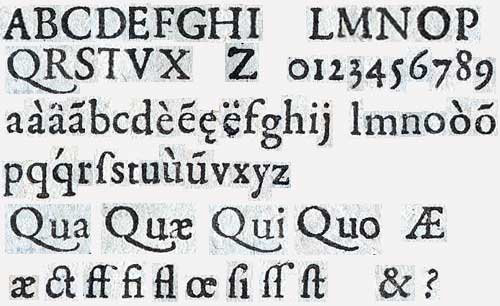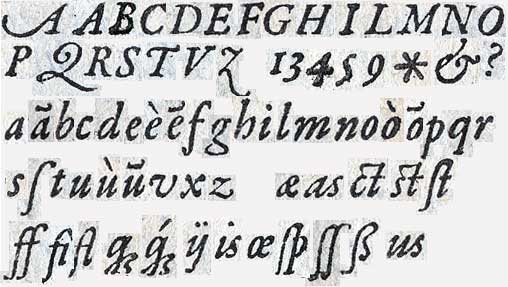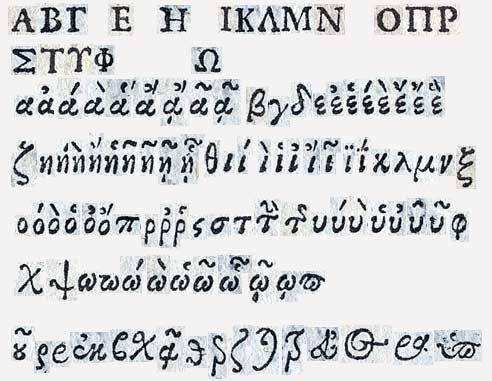Three styles of type are used in the book, in various sizes: roman, italic, and Greek. The type in the samples below were digitally assembled from multiple pages of the text.
There is considerable variation in the shapes of letters from page to page, and to a lesser extent within a single page. Since the type was made by hand, possibly from several matrices or even from several punches, such variation is to be expected. There are also noticible differences in how the type is laid out from page to page; this suggests that more than one typesetter assembled the type forms.
At least some of the type was probably cut by Hendrick van den Keere.

Roman type sample from the Physiologus text
The sample above is the "roman" type used for the commentary on the Physiologus text. It is also used for the "Sanctissimo D. N. Sixtus V" text, the "Vitæ S. Epiphanii" text, and the "Index rerum et verborum" and "Auctores" sections.
 Italic type sample from the Præfatio text
Italic type sample from the Præfatio text
The sample above is the "italic" type used in the "ad Lectori Præfatio" section of the text. A similar italic typeface, in various sizes, is also found in the "Petrii Angelii Bargæi ad lectorum" text, the Latin part of the Physiologus text, the "Die Festo Palmarum Sermo" text, and the "Approbatio" text. It is also used for quotations in the commentary to the Physiologus.

Greek type from the Die Festo Palmarum Sermo text
The sample above is the Greek type used in the "Die Festo Palmarum Sermo" text. The same typeface, in various sizes, is also found in the Greek parts of the "Petrii Angelii Bargæi ad lectorum" and Physiologus texts, and also scattered throughout the Latin texts..
Research on identifying the various typefaces and their makers is ongoing. If you have information you would like to share on this topic, please contact the editor.
